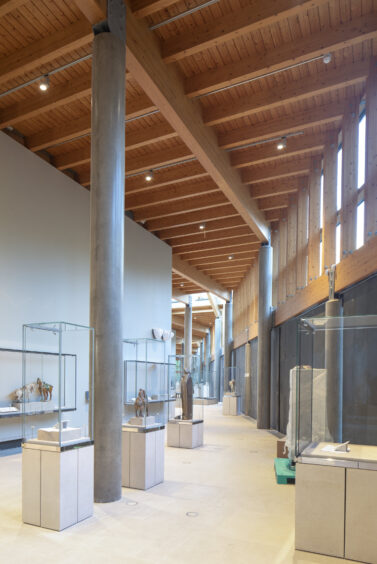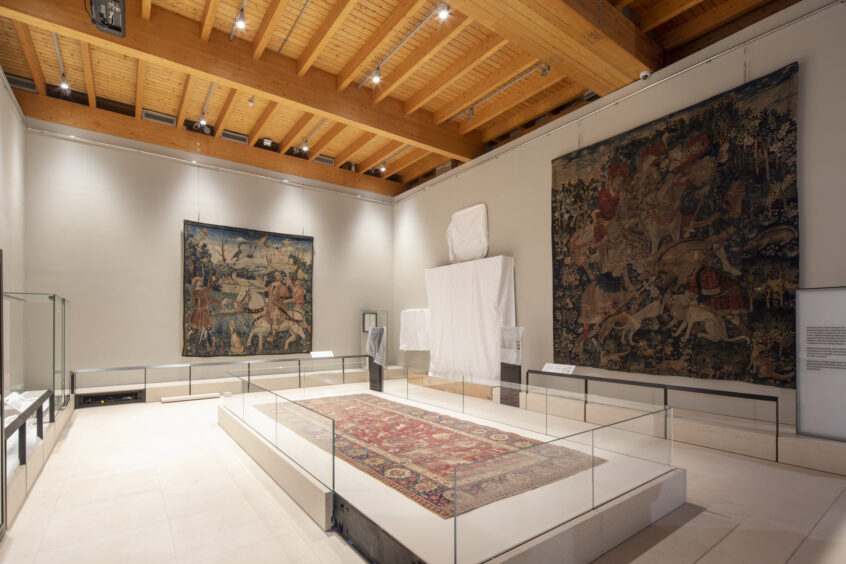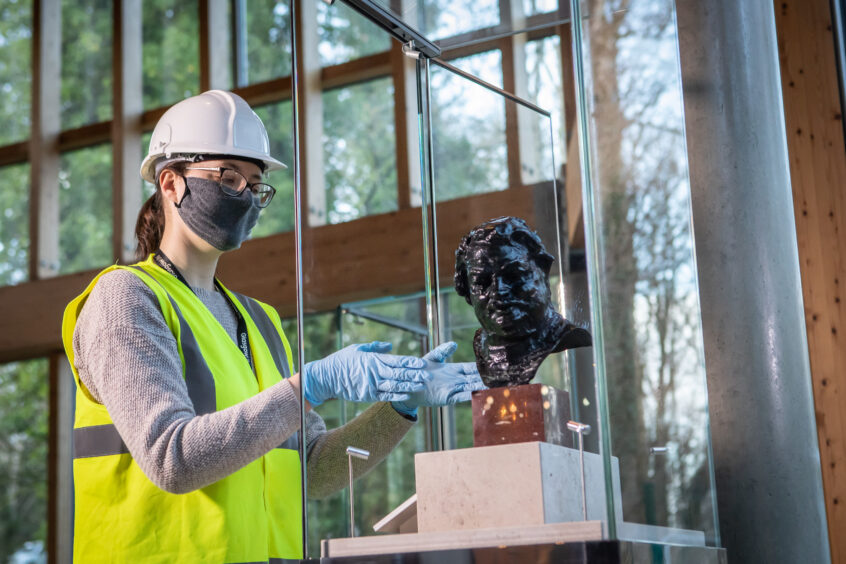The Burrell Collection will reopen to the public on March 29 having been closed since 2016 to undergo refurbishment work.
Glasgow Life announced the opening date as a special preview event allowed a glimpse inside at some of the improvements that have been made to the attraction.
The result is a modern, greener museum that will show more of the collection to visitors and give access to over a third more of the building.
Watch the video above to have a look inside and hear from some of the people involved.
What is The Burrell Collection?
One of Glasgow’s top attractions, the Burrell Collection building in the city’s Pollok Country Park houses thousands of exhibits and artefacts.
They were donated to the city by Sir William Burrell, who devoted more than 75 years of his life to amassing, along with his wife, Constance, Lady Burrell, one of the world’s greatest personal art collections.
It is renowned for its quality of Chinese art, exquisite stained glass, intricate tapestries as well as its breadth of fine art.
The mysterious Mr Burrell: Author unpicks motivation of Scotland’s famous art collector
Professor Frances Fowle, senior trustee of Sir William Burrell’s Trust, said: “Reimagining The Burrell Collection has been an exciting and challenging undertaking, and the results have surpassed all our expectations.
“Works of art are now arranged across three floors of the elegant, newly-refurbished building, giving them room to breathe. Not only are many more items on display, those normally hidden from view will now be accessible via a state-of-the art open store.
“Local and international visitors will be introduced to new and intriguing aspects of the Collection through its multi-media interpretation. There is a fascinating world of beauty and craftsmanship to be discovered when The Burrell Collection reopens.”
What’s in the collection?
Burrell’s gift of over 9000 artworks includes one of the finest collections of tapestries and stained glass in the world, and one of Europe’s finest collections of Degas.
The collection is home to the Wagner garden carpet, one of the earliest surviving Persian garden carpets in the world.
It has rarely been on public display since The Burrell Collection first opened in 1983, but the museum’s refurbishment and redisplay means this priceless carpet will now be on show permanently.
Other highlights include Chinese pottery and porcelain produced over a 5,000-year period, making it one of the most significant collections of Chinese Art in Europe.
There are also paintings by renowned French artists including Manet, Cézanne and Degas, as well as medieval treasures including stained glass, arms and armour and over 200 tapestries and carpets, which are among the finest in the world.
What’s changed?
On reopening, the museum’s gallery space has increased by 35%, allowing important and unique objects from the collection, which have not been seen for decades, or have never been on permanent display, to go on show.
New displays will give visitors a better understanding of the international significance of The Burrell Collection’s artworks and the people who made them and some of the people who have owned them.
In total 225 displays will spread across 24 galleries. The displays include innovative digital elements such as video walls, interactives and hybrid systems created to help people engage with the stories behind the collection.
A new central stairway will allow visitors access to the lower floor for the first time, where they can watch items not on display being cared for. A new temporary exhibition space has also been created.
New galleries have been created on upper floors which will take visitors to spaces in the building they have never seen before.
New displays will give visitors a better understanding of the international significance of The Burrell Collection’s artworks, as well as the people who made them and some of the people who have owned them.
The displays include innovative digital elements such as video walls, interactives and hybrid systems created to help people engage with the stories behind the Collection.
The museum’s environmental performance has been enhanced by greatly improving the building’s exterior through a new roof, glazing and cladding, and by replacing power, heating and lighting systems with more efficient and sustainable technologies.

Enjoy the convenience of having The Sunday Post delivered as a digital ePaper straight to your smartphone, tablet or computer.
Subscribe for only £5.49 a month and enjoy all the benefits of the printed paper as a digital replica.
Subscribe

